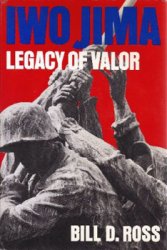Ethnohistory
No pre-Hispanic culture in South America, including the Incas, developed a writing system, so there are no indigenous records of what life was like prior to the arrival of Europeans. When the Spaniards arrived along the coast of South America in CE 1532, the Inca empire was at its largest extent, though in the throes of a civil war between two half-brothers (see below). During and after their conquest of the Incas, Spanish officials and priests began to record information about the Incas, both through observations and interviews with surviving Inca individuals. The important point about this is that the history that was recorded was the Inca version, and that of the dominant faction of the Incas. There are relatively few documents that deal with non-Incas, although as time wore on, litigation brought by non-Incas began to show up in court records. In addition, there are some chronicles that discuss what life was like before the Incas came. Still, what we know from these early Spanish documents is one version, and one that was an oral tradition as well. When Inca society is described below, it is well that the reader remembers that this is a skewed view; if a history had been written by a conquered people, or a member of the lower social groups, it might have looked very different (see Americas, South: Inca Ethnohistory).
Another drawback to using ethnohistorical documents is the limitations of the writers. Spanish officials were writing about a culture that was very foreign to them, and they described it in terms that they understood from their own experiences. They also chose to write about those aspects of the Inca society that were important to them, like economic activities, politics, and religion. Daily life and material culture were less important. Spanish writers could also be opinionated, and take the sides of certain factions of the Inca, a point noted by recent authors on the Incas. Still, these documents provide a wealth of information that is not available about the earlier cultures, despite the cautions needed in taking them as the truth. D’Altroy provides a useful guide to the best of the sources on the Inca.
Archaeology
A complementary source of information on the Incas is the archaeological record. Archaeology can provide information about those aspects of culture that eth-nohistorians neglect. What kinds of tools, houses, settlements, items of personal adornment that cultures used are the principal data of archaeology. Less accessible are things like religious beliefs, social structure, marriage patterns, and language. As is evident in other articles in this encyclopedia, the archaeological record has its own drawbacks, the most obvious being that the understanding we gain from it about past cultures is fundamentally one of interpretation. Scholars can look at the same evidence and come to different conclusions. Much of this is due to the incompleteness of the record, but some is also due to the viewpoint of the archaeologist. Archaeology provides a good test of the ethnohistorical record. The book entitled Provincial Inca. Ethnohis-torical and Archaeological Assessment of the Impact of the Inca State provides several case studies of how the two sources of information used together provide a better understanding of the nature of the Inca impact on its vassal polities than either source individually.




 World History
World History









